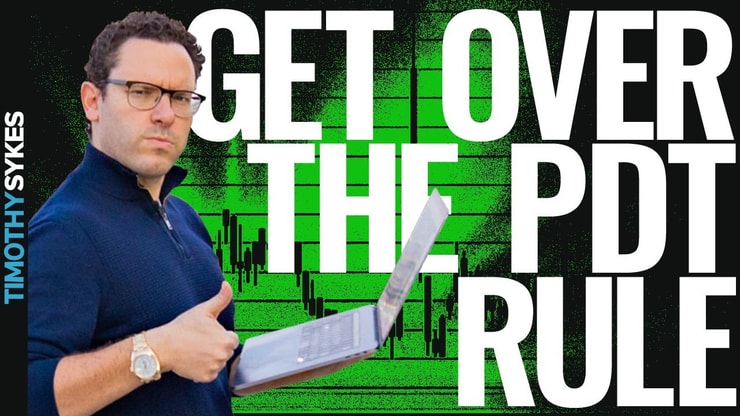Pattern Day Trader (PDT) is a regulatory designation from the Financial Industry Regulatory Authority (FINRA) applied to traders who execute four or more day trades within five business days in a margin account, provided these trades exceed six percent of their total trading activity in the same period. This definition helps differentiate a regular day trader from a pattern day trader. The rules for pattern day traders are distinct and more stringent than those for occasional day traders, primarily to address the increased risks associated with frequent day trading.
You should read this article because it provides a comprehensive understanding of what a Pattern Day Trader (PDT) is, including the specific rules and requirements, which are crucial for anyone looking to engage in frequent day trading.
I’ll answer the following questions:
- What is a Pattern Day Trader?
- What does a Pattern Day Trader do?
- What are the minimum requirements to become a Pattern Day Trader?
- What are the benefits of being a Pattern Day Trader?
- What are the drawbacks of being a Pattern Day Trader?
- What common strategies do Pattern Day Traders use?
- How does the Pattern Day Trader rule apply to different types of accounts?
- How can one avoid the Pattern Day Trading rule?
Let’s get to the content!
Table of Contents
- 1 What Is a Pattern Day Trader?
- 2 Understanding Pattern Day Trading Rules
- 3 Types of Securities Eligible for Pattern Day Trading
- 4 What Are the Minimum Requirements To Become a Pattern Day Trader?
- 5 Benefits of Being a Pattern Day Trader
- 6 Drawbacks of Being a Pattern Day Trader
- 7 Common Strategies Used by Pattern Day Traders
- 8 Pattern Day Trader vs Day Trader
- 9 Does the Pattern Day Trader Rule Apply to Margin Accounts?
- 10 Does the Pattern Day Trader Rule Apply to Cash Accounts?
- 11 How To Avoid the Pattern Day Trading Rule
- 12 Key Takeaways
- 13 Frequently Asked Questions
- 13.1 What Happens If I am Classified as a Pattern Day Trader?
- 13.2 How Does Margin Trading Affect a Pattern Day Trader?
- 13.3 Can a Pattern Day Trader Trade in Different Types of Securities?
- 13.4 What Services Do Brokerage Firms Offer to Pattern Day Traders?
- 13.5 How Do Brokerage Firms Cater to the Unique Needs of Their Customers?
What Is a Pattern Day Trader?

2025 Millionaire Media, LLCA Pattern Day Trader engages in frequent buying and selling of stocks, options, or other securities within the same trading day. This type of trader operates under a higher level of market analysis and technical strategies, often leveraging substantial amounts of capital. Unlike casual day traders, pattern day traders typically use complex charts and patterns to make their trading decisions, focusing on short-term price movements and trends. Their trading activity is characterized by a higher number of trades, often executed with a combination of skill, discipline, and advanced trading tools.
How Does a Pattern Day Trader Work?
The operational mechanism of a pattern day trader revolves around capitalizing on intraday market movements. They rely heavily on technical analysis, using indicators, charts, and patterns to identify potential entry and exit points. Their approach is often systematic, incorporating risk management and money management techniques to protect their positions. A pattern day trader must maintain a minimum equity of $25,000 in their margin account, which enables them to leverage higher amounts of money and potentially amplify their profits. However, this also involves a higher degree of risk, as the market’s volatility can lead to significant losses.
Understanding Pattern Day Trading Rules
Navigating the rules of pattern day trading is crucial for any trader embarking on this journey. These rules, set forth by regulatory bodies, are designed to protect both the trader and the brokerage firm. They include specific margin requirements, which dictate how much capital a trader must have in their account, and restrictions on trading activities based on account size and performance. Understanding these rules is not just about compliance; it’s about smart trading. In my trading and teaching career, I’ve emphasized to my students the importance of not only knowing these rules but also understanding the rationale behind them. It’s this understanding that can often make the difference between successful trades and unnecessary losses.
Minimum Equity Requirement
The minimum equity requirement for a pattern day trader is $25,000. This amount must be present in the margin account before any day trading activities can commence. If the account’s balance falls below this threshold, the trader is prohibited from making further day trades until the minimum equity level is restored. This rule aims to ensure that pattern day traders have sufficient capital to absorb the risks associated with high-frequency trading.
More Breaking News
- Primoris Services Stocks Surge: Analysis and Insights
- Pan American Silver Surge: Future Holds Promise?
- Marvell’s Sudden Slide: Should Investors Be Worried?
- AAOI Stock Soars: Time to Buy?
Day Trade Limit
Pattern day traders are limited in terms of the number of trades they can execute. They can’t make more than four day trades within five business days if these trades represent more than six percent of their total trading activity in that period. This limitation is designed to prevent excessive trading and the heightened risk that comes with it.
Margin Account Requirements
Pattern day traders must operate a margin account. Margin accounts allow traders to borrow funds from their brokerage firm, providing access to more capital than what is available in their account. This enables larger trades, which can potentially lead to greater profits but also increases the risk, including the possibility of a margin call if trades go unfavorably.
Day Trading Buying Power Limitations
A pattern day trader’s buying power is up to four times the maintenance margin excess in their account as of the previous day’s close. This increased buying power permits more significant trades but also amplifies potential losses, making disciplined trading and risk management crucial.
Restrictions on Exceeding Day Trading Buying Power
If a pattern day trader exceeds their allotted day trading buying power, restrictions are imposed on their account. These may include the freezing of day trading in their account for a specified period, often 90 days, or until they meet the required margin call.
Types of Securities Eligible for Pattern Day Trading

2025 Millionaire Media, LLCPattern day traders have a range of securities at their disposal, each offering different opportunities and challenges. This includes stocks, which are a common choice due to their liquidity and range of options, and ETFs, which offer diversified exposure to various markets. Understanding the nuances of each type of security, from the way candlestick patterns reveal breakout signals to how support and resistance levels can guide trading decisions, is a fundamental aspect of my trading strategy. I often remind investors that the choice of asset should align with their overall strategy and comfort level with different market conditions.
Stocks and ETFs
Stocks and Exchange-Traded Funds (ETFs) are the most common securities used in pattern day trading. Their liquidity and volatility make them ideal for short-term trading strategies, allowing pattern day traders to capitalize on price movements within the same trading day.
Options and Futures Contracts
Options and futures contracts are also frequently traded by pattern day traders. These types of securities offer leverage, which can enhance profits from day trades. However, they also carry additional risks and require a thorough understanding of the market mechanisms and contract specifications.
What Are the Minimum Requirements To Become a Pattern Day Trader?
To become a pattern day trader, meeting the minimum equity requirement is just the start. Beyond the financial aspect, there’s a need for a robust risk management strategy and a deep understanding of market signals and trends. This includes backtesting strategies and understanding fundamental and technical analysis. My journey in trading has taught me that these requirements are not barriers, but rather essential safeguards that help ensure traders are prepared for the demands of rapid, high-volume trading.
Minimum Equity Requirement
The minimum equity requirement for a pattern day trader is $25,000. This amount must be maintained in the margin account at all times. Falling below this requirement restricts the trader from engaging in further day trades until the account is replenished to the required level.
Risk Tolerance and Margin Accounts
In addition to the financial requirement, aspiring pattern day traders must assess their risk tolerance. Trading on margin amplifies both gains and losses, and traders need to be prepared for the possibility of rapid changes in their account balances. Understanding and managing these risks is a key component of successful pattern day trading.
Benefits of Being a Pattern Day Trader
Being a pattern day trader offers several advantages, including the ability to capitalize on market movements more frequently and access to increased leverage. This leverage can be a powerful tool when used correctly, allowing for greater potential profits. However, as I’ve often counseled traders, with greater opportunity comes greater responsibility. Successful pattern day trading requires a keen understanding of market psychology, a disciplined approach to risk management, and the ability to make quick, informed decisions.
If you want to take a deeper dive into the advantages of this trading style, check out my article on the benefits of pattern day trading.
Increased Access to Leverage
One of the significant benefits of being a pattern day trader is the increased access to leverage. This allows traders to take larger positions than what their account balance would typically permit, potentially leading to higher profits.
Ability to Execute Multiple Trades Daily
Pattern day traders have the flexibility to execute multiple trades daily, taking advantage of short-term market movements. This can lead to rapid accumulation of profits, provided the trades are successful and well-managed.
Potential for Rapid Profit Accumulation
The nature of pattern day trading, with its focus on short-term market fluctuations, presents opportunities for quick profit accumulation. This is particularly true in volatile markets, where prices can change rapidly.
Access to Advanced Trading Tools and Platforms
Pattern day traders often have access to advanced trading tools and platforms through their brokers. These tools provide valuable market insights, real-time data, and sophisticated analysis capabilities, enhancing trading decisions and strategies.
Drawbacks of Being a Pattern Day Trader

2025 Millionaire Media, LLCWhile the potential for higher profits exists, the drawbacks of being a pattern day trader are significant and should not be underestimated. These include the higher capital requirements and the increased risk of significant financial losses. The psychological impact of this high-stress, high-stakes trading environment is also a factor that can’t be overlooked. In my interactions with traders, I emphasize the importance of being aware of these challenges and preparing both financially and mentally for the rigors of pattern day trading.
Higher Capital Requirements
The higher capital requirements ($25,000 minimum equity) can be a significant barrier for some traders. Maintaining this level of funding is essential for pattern day trading, limiting access for those with less capital.
Increased Risk of Significant Losses
The increased leverage and trading volume associated with pattern day trading amplify the potential for significant losses. This heightened risk requires careful money management and risk mitigation strategies.
Greater Emotional and Psychological Stress
The fast-paced and high-stakes nature of pattern day trading can lead to increased emotional and psychological stress. This stress can impact decision-making and requires a disciplined approach to manage effectively.
Intensified Need for Continuous Market Monitoring
Pattern day trading demands continuous market monitoring and quick decision-making. Traders need to be constantly aware of market changes, news, and events that could impact their positions, necessitating a high level of commitment and time investment.
Common Strategies Used by Pattern Day Traders
Pattern day traders employ a variety of strategies to maximize their chances of success. These include momentum-based strategies, which rely on following market trends, and reversal-based strategies, which look for signals indicating a potential change in market direction. Scalping is another common technique, focusing on making numerous small trades for incremental gains. My experience has shown me that the effectiveness of these strategies often comes down to how well they are matched with a trader’s individual style and risk tolerance.
Momentum-Based Strategies
Momentum-based strategies involve identifying and capitalizing on stocks that are moving significantly in one direction on high volume. These strategies rely on the continuation of the existing trend and often use technical indicators to identify potential entry and exit points.
Reversal-Based Strategies
Reversal-based strategies focus on identifying points where a stock’s price trend is likely to reverse. This involves careful analysis of price patterns, technical indicators, and market sentiment to predict changes in direction.
Scalping Strategies
Scalping strategies involve making numerous small trades throughout the day to capitalize on minor price movements. This requires quick decision-making and a thorough understanding of market behavior to be effective.
Pattern Day Trader vs Day Trader
The main difference between a pattern day trader and a regular day trader lies in the frequency and volume of their trades. While both engage in buying and selling securities within the same day, pattern day traders execute this at a higher frequency and volume, leading to the specific regulatory designation and associated rules. Pattern day traders are subject to more stringent requirements and have increased access to leverage, but also face higher risks and capital demands.
Do Pattern Day Traders Make Money?
The success of pattern day traders varies widely. While some achieve significant profits, others may struggle due to the high risks and complexities involved. Consistent profitability as a pattern day trader requires a combination of skill, discipline, and a deep understanding of market dynamics.
Does the Pattern Day Trader Rule Apply to Margin Accounts?

2025 Millionaire Media, LLCYes, the pattern day trader rule specifically applies to margin accounts. These accounts allow traders to borrow funds for trading, increasing their buying power. The rule is in place to manage the risks associated with the increased leverage that margin accounts provide.
Margin accounts offer increased buying power but also carry higher risks, including the possibility of a margin call. On the other hand, cash accounts limit traders to the funds they have, reducing risk but also potential gains. For a detailed comparison and to make an informed decision, read about the differences between margin and cash accounts.
Does the Pattern Day Trader Rule Apply to Cash Accounts?
No, the pattern day trader rule does not apply to cash accounts. In a cash account, traders can only trade with the funds available without using leverage. This limits the trading capacity but also reduces the risks associated with borrowing funds.
How To Avoid the Pattern Day Trading Rule
For traders not ready to navigate the complexities of pattern day trading, there are strategies to avoid falling under the PDT rule. These include trading in a cash account, which doesn’t have the same margin rules as a margin account, and spreading trades across multiple brokerage accounts to manage trading volume. Some traders also look beyond traditional stock markets, turning to forex or futures, where PDT rules don’t apply. These alternatives should be chosen carefully, keeping in mind the different risk profiles and market dynamics. As always, I advise traders to thoroughly research and understand these alternatives before diving in.
There are several ways to navigate around this rule, including trading in different types of accounts or markets. For traders looking for more information on how to effectively manage their trading activities in light of this rule, delve into the details of the pattern day trading rule for strategic insights and tips.
Open a Cash Account
One way to avoid the pattern day trader rule is to trade in a cash account. This means trading only with the available funds without using margin. While this limits the buying power, it also avoids the restrictions associated with pattern day trading.
Use Multiple Brokerage Accounts
Using multiple brokerage accounts can help in distributing trades and avoiding the concentration of day trades in one account, which can trigger the pattern day trader designation.
Have an Offshore Account
Some traders opt for offshore accounts to circumvent certain regulatory restrictions. However, this comes with its own set of risks and complexities and should be considered carefully.
Trade Forex and Futures
Trading in forex and futures markets can provide alternatives to stock trading and are not subject to the pattern day trader rule. These markets have their unique characteristics and risks.
Options Trading
Options trading is another avenue that is not directly subject to the pattern day trader rule. However, traders should be aware of the specific risks and requirements involved in options trading.
Key Takeaways

2025 Millionaire Media, LLC- Understanding the definition and rules of being a Pattern Day Trader is essential for anyone looking to engage in frequent day trading.
- The classification comes with specific regulatory requirements, including minimum equity and margin account rules.
- While there are benefits, such as increased leverage and the potential for rapid profits, there are also significant risks and drawbacks, including the possibility of substantial losses and the psychological pressures of intensive trading.
- Choosing the right strategy and understanding the regulatory environment are crucial for success in pattern day trading.
Trading isn’t rocket science. It’s a skill you build and work on like any other. Trading has changed my life, and I think this way of life should be open to more people…
I’ve built my Trading Challenge to pass on the things I had to learn for myself. It’s the kind of community that I wish I had when I was starting out.
We don’t accept everyone. If you’re up for the challenge — I want to hear from you.
Apply to the Trading Challenge here.
Trading is a battlefield. The more knowledge you have, the better prepared you’ll be.
Are you still struggling to get over the PDT? If you’re committed to doing the work, write “small gains add up” in the comments!
Frequently Asked Questions
What Happens If I am Classified as a Pattern Day Trader?
If you’re classified as a pattern day trader, you must maintain a minimum equity of $25,000 in your margin account and adhere to specific trading rules and restrictions.
How Does Margin Trading Affect a Pattern Day Trader?
Margin trading allows pattern day traders to trade larger amounts than their account balance, increasing both potential profits and risks.
Can a Pattern Day Trader Trade in Different Types of Securities?
Yes, a pattern day trader can trade in various securities, including stocks, ETFs, options, and futures, each offering different opportunities and risks.
What Services Do Brokerage Firms Offer to Pattern Day Traders?
Brokerage firms provide a variety of services tailored to the needs of pattern day traders. These services include access to sophisticated trading platforms, real-time market data, and educational resources. Additionally, they offer products such as advanced charting tools and analysis series that are crucial for making informed trading decisions. Understanding these services and resources is vital for anyone looking to become a successful pattern day trader.
How Do Brokerage Firms Cater to the Unique Needs of Their Customers?
Brokerage firms focus on meeting the specific needs of their customers, including pattern day traders, by offering specialized assets for trading. This includes providing a range of financial products such as stocks, options, and futures. Moreover, some firms might offer credit cards and services linked to the customer’s brokerage account, facilitating seamless transactions for trading activities. The customer-centric approach of these firms ensures that traders have the necessary tools and support to navigate the markets effectively.











Leave a reply